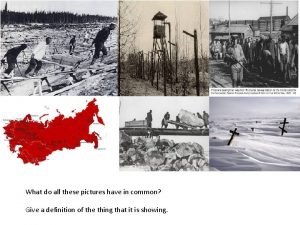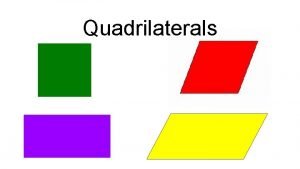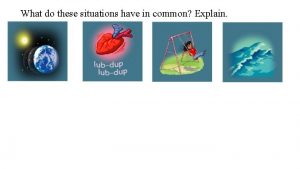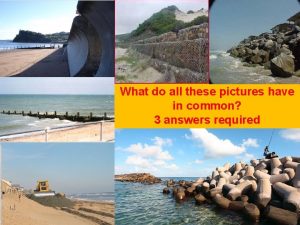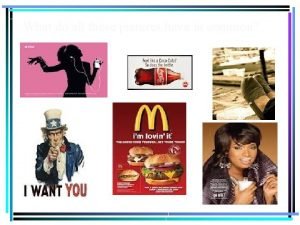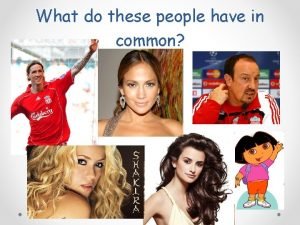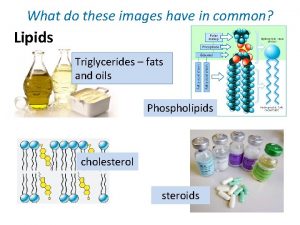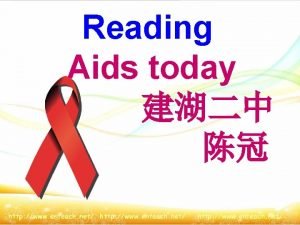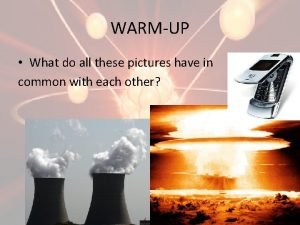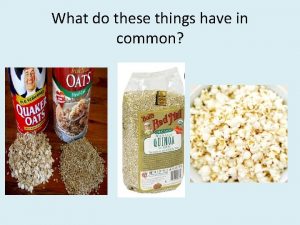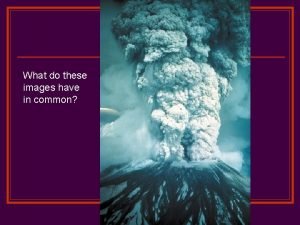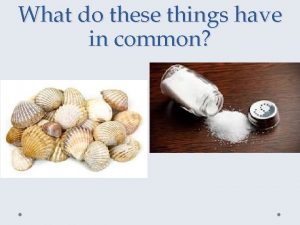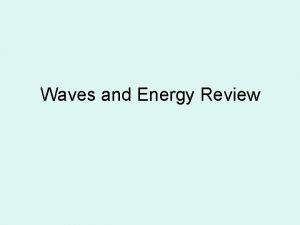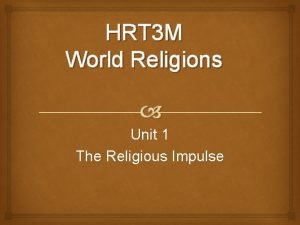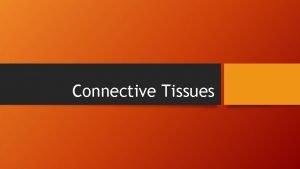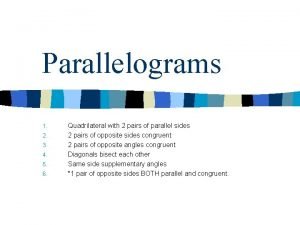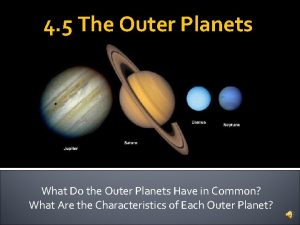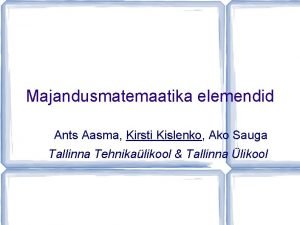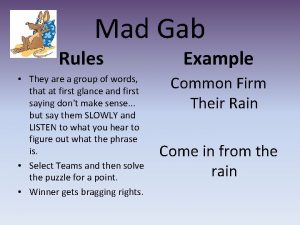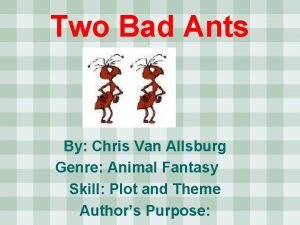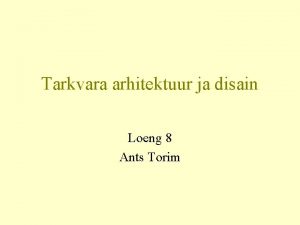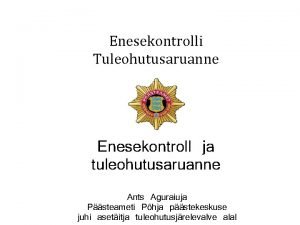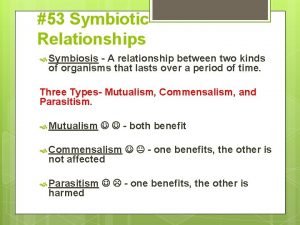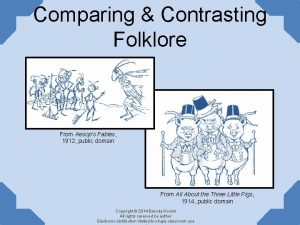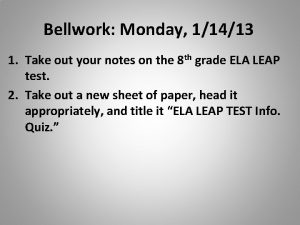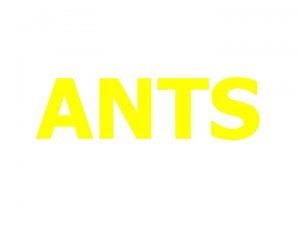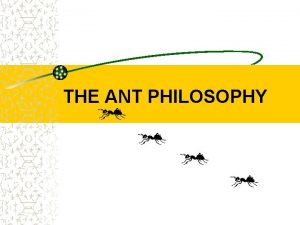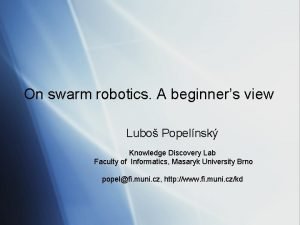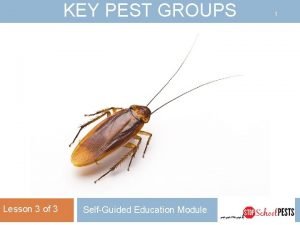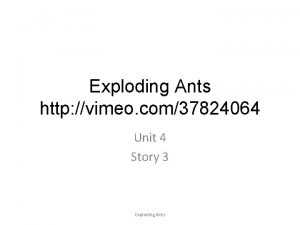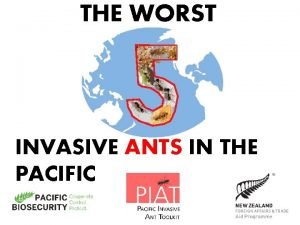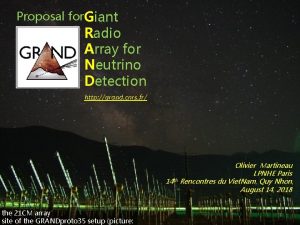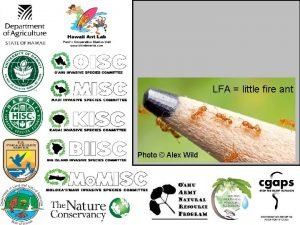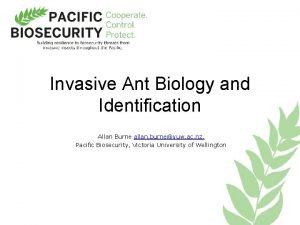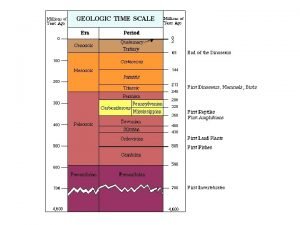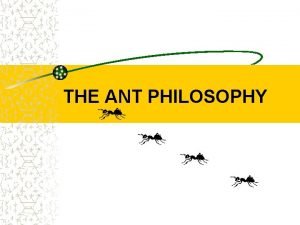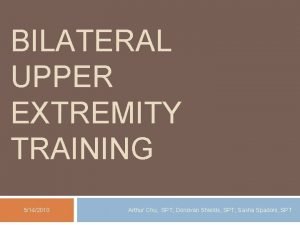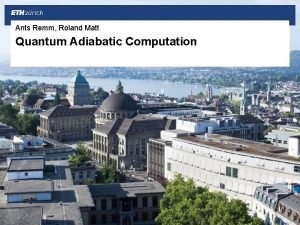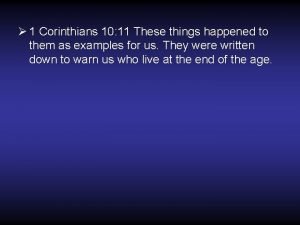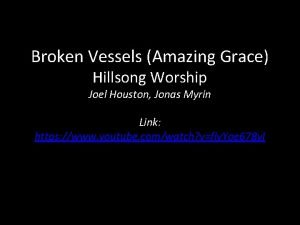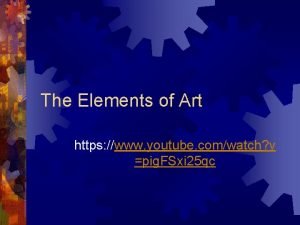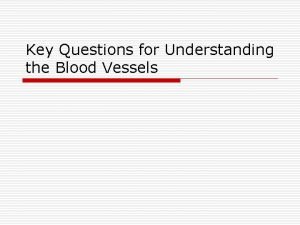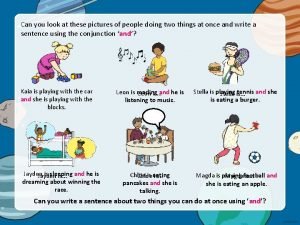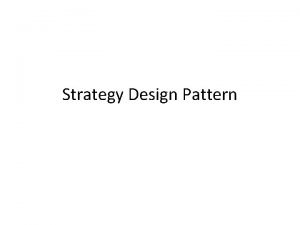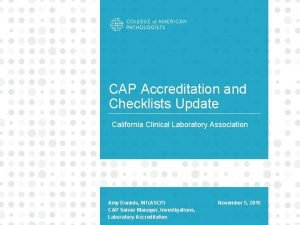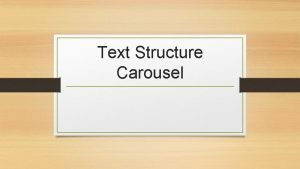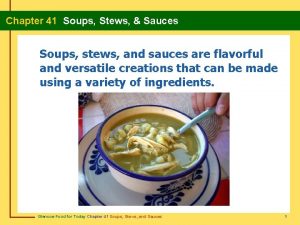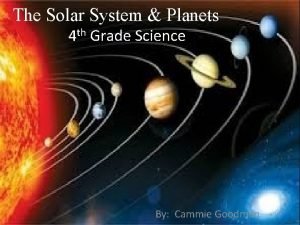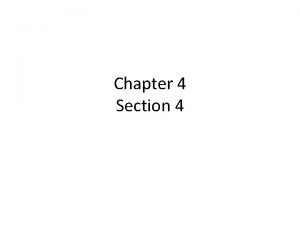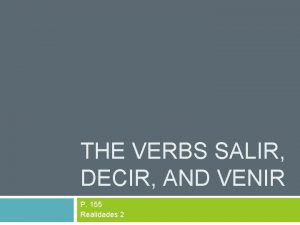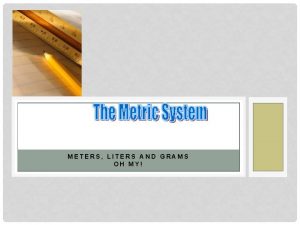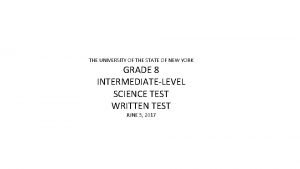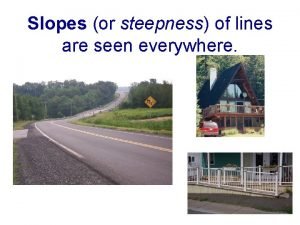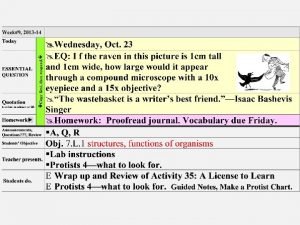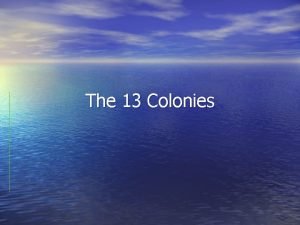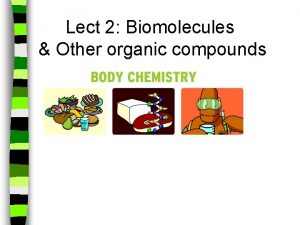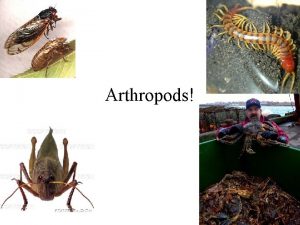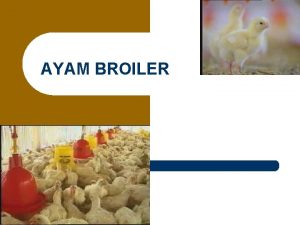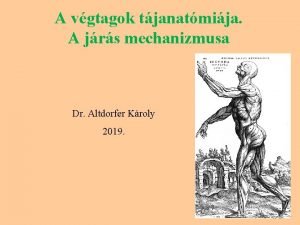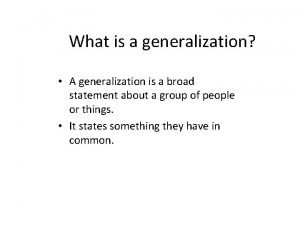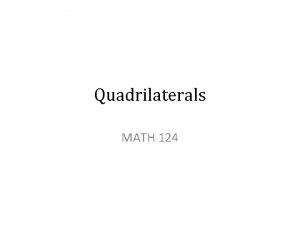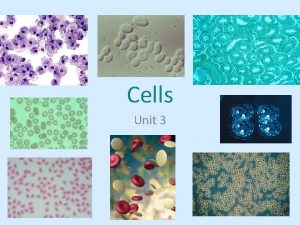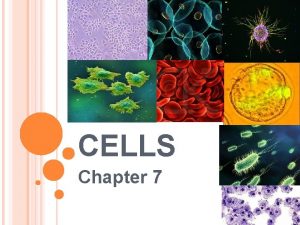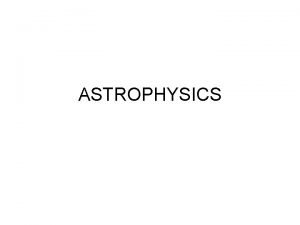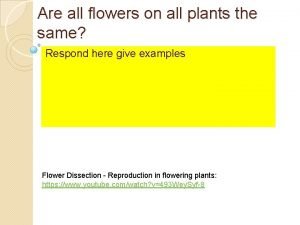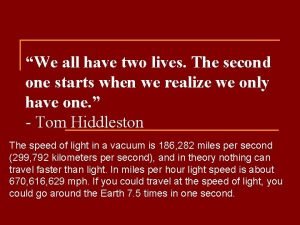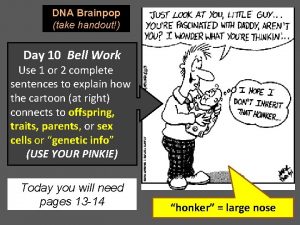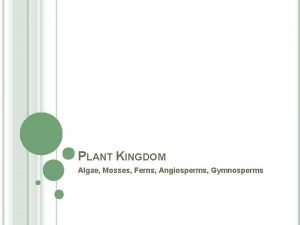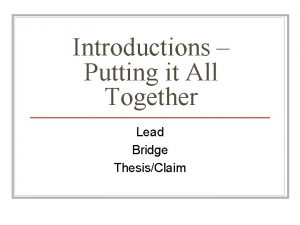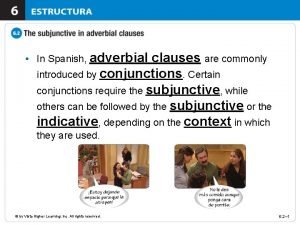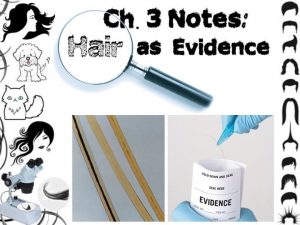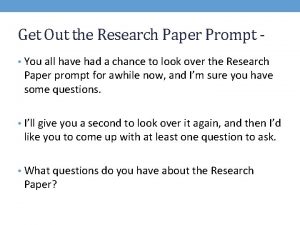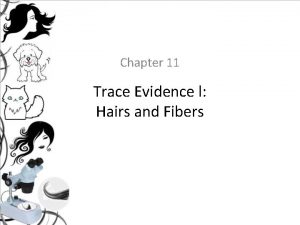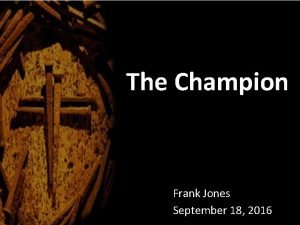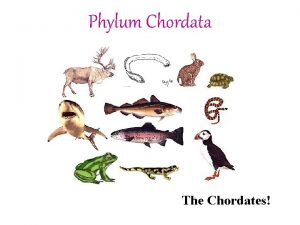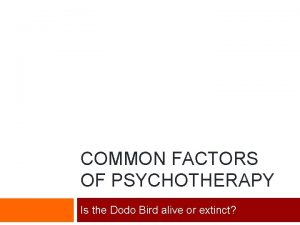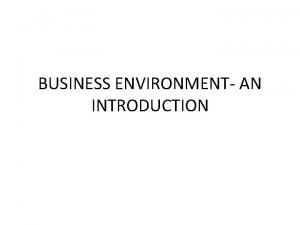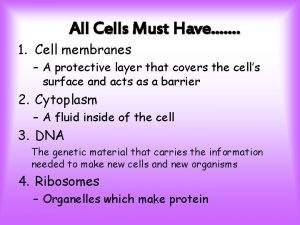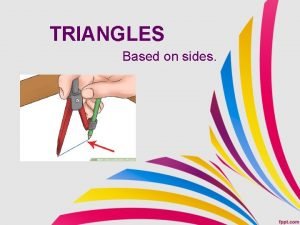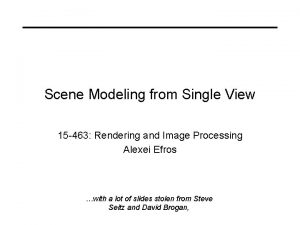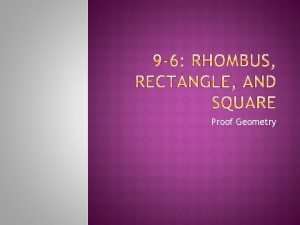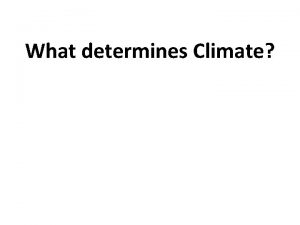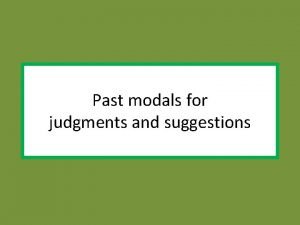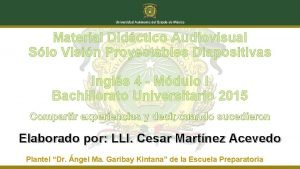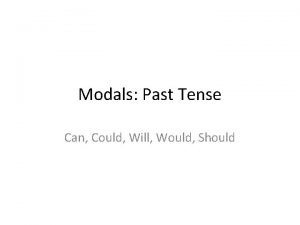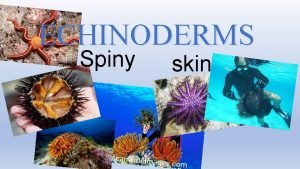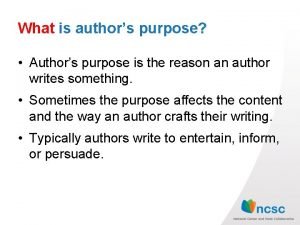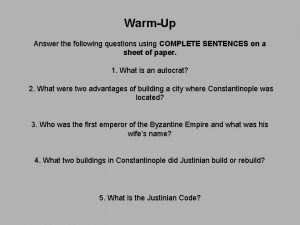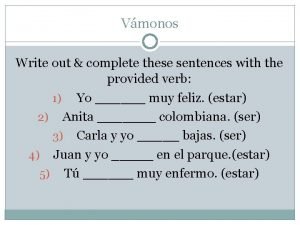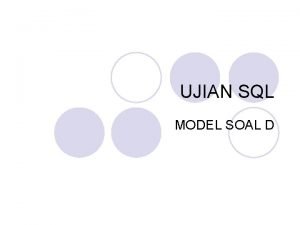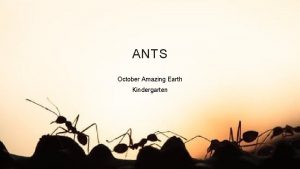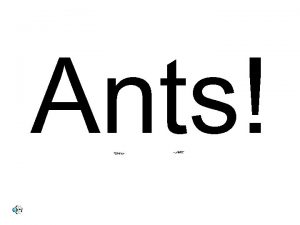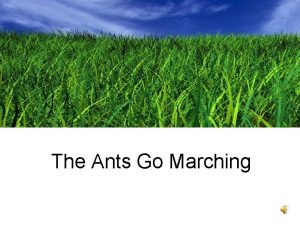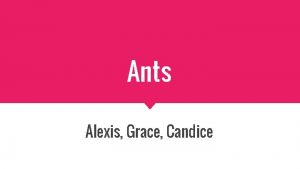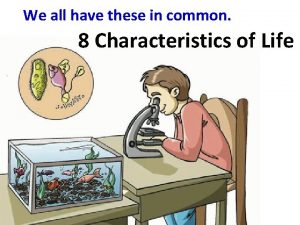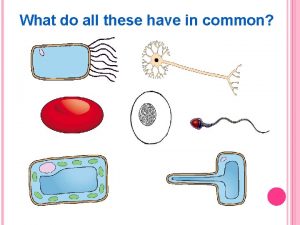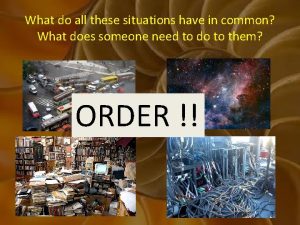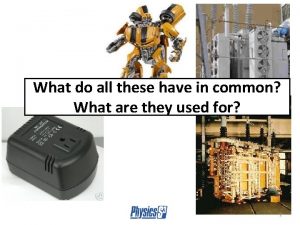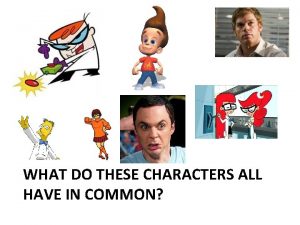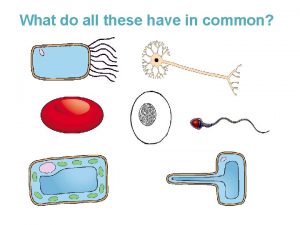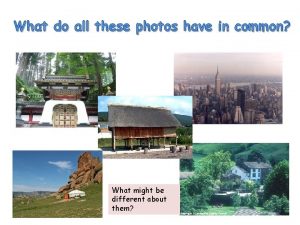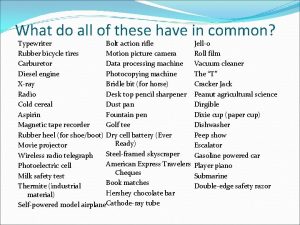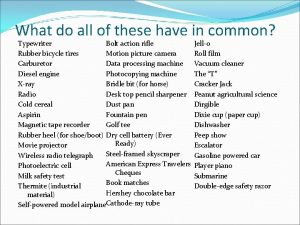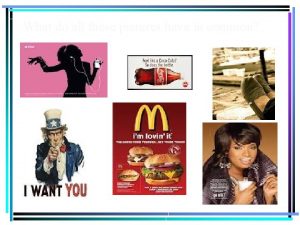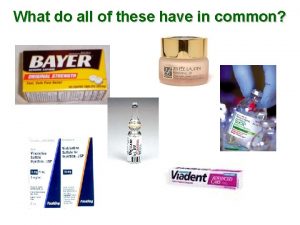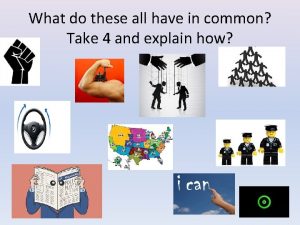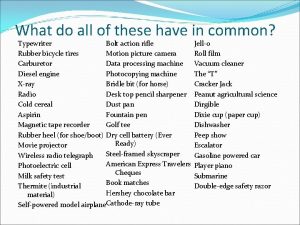What do all these have in common ants























































































































































- Slides: 151

What do all these have in common? ants rattlesnake termites sea urchin turtle cow cod pigs feet monkey brains squid sheep eyeballs snails octopus seaweed worms









Food n. Food – contains nutrients Ø Nutrients are substances in foods that the human body can digest, absorb, and use for its metabolism.

Ø Humans are heterotrophic and therefore, must ingest food. Ø Food includes nutrients and roughage (fiber). Ø Roughage (also called fiber) is indigestible material in foods.

Nutrients carbohydrates, proteins, lipids, minerals, vitamins, and water.

III‑ 1. Human Nutrition Ø Nutrition includes those Nutrition activities by which organisms obtain and process nutrients needed for energy, growth, repair and regulation.

Ø Vitamins, minerals, and water are small molecules and can be absorbed without digestion. Ø Carbohydrates, lipids, and proteins require digestion.

Ø Nutritional requirements vary with an individual's age, sex and activities.

How does food become feces? food feces

Digestion - the process of breaking food down into a smaller, simpler form, so it can be used by the cell(s) of an organism



Place these in order from smallest to largest (from simple to most complex) • • Organ systems Cells Tissues Organs

Simple • Cells • Tissues • Organs Complex • Organ systems

Levels of Organization in the Human Body

Salivary glands mouth epiglottis esophagus liver tongue stomach pancreas Small intestine Large intestine anus appendix rectum

liver Gall bladder stomach pancreas

The human digestive system consists of a system continuous "one‑way" tube and the assisting accessory organs.

How is food processed in the mouth?

Oral Cavity

1. Oral Cavity (mouth) Ø Ingestion of food occurs through the mouth (oral) cavity which contains the teeth, tongue, and the openings from the salivary glands.

incisors cut (bite) food canines rip, grip, tear food

incisors premolars grind, crush food canines molars crush food

What is the function of the teeth?


ØThe teeth function in the mechanical breakdown of food which serves to increase the surface area of the food for enzyme action.



plaque

What are the functions of the tongue?

Functions of the Tongue pushes food around mouth and between teeth • mixes food with saliva • tastes the food - mmmm! •

Functions of the Tongue forms mass of food for swallowing • pushes food to the back of throat (pharynx) for swallowing •


What are those bumps on her tongue?



What is the tongue made of?

Tongue composed of skeletal muscle with an outer layer of mucous membrane

Taste Zones Bitter Sour Salt Sweet

WRONG!

Salivary Glands

Ø The chemical digestion of carbohydrates begins here. Ø The salivary glands secrete saliva which contains the enzyme amylase which digests starch into disaccharides.

Functions of Saliva • lubricates food • contains lysozyme • contains salivary amylase

This happens later on! (Not in the mouth) disaccharide monosaccharide

Composition of Saliva 95% water • mucus • salivary amylase • lysozyme •




uvula ?


Swallowing animation http: //www. youtube. com/watch? v=Yg_k. Aq. Blp 9 Y https: //www. youtube. com/watch? v=p. Nc. V 6 y. Afq-g https: //www. youtube. com/watch? v=b 20 VRR 9 C 37 Q Good for review of entire dig. system

How does food get to the stomach even if you’re upside down?

Peristalsis The wavelike muscular contractions that push food through the digestive tube

Peristalsis • http: //www. youtube. com/watch? v=YH 3 U_ SLp 9 G 0&feature=related • http: //www. youtube. com/watch? v=f 6 y 5 Syk bq. JE&feature=related

How is the action of peristalsis like surfing a wave?

Peristalsis





Endoscope



CHEW BEFORE YOU SWALLOW!

2. Esophagus Ø As a result of swallowing, food moves into the esophagus. Ø This begins the peristaltic action of the esophagus which moves the food to the stomach and through the GI tract.

Normal esophagus (left) and stomach lining (right) Esophageal cancer (stomach lining on left)


stomach

Inside the Stomach

1. Stomach Ø The stomach is a muscular organ in which food is temporarily stored, liquefied to chyme, and where protein digestion begins. ØIts lining contains gastric glands which secrete enzymes and hydrochloric acid.

Stomach muscular organ stores food mechanical digestion

Stomach chemical digestion gastric juice pepsin and HCl chemically digests protein

·Mucous cells: secrete a basic mucus that protects the epithelium against shear stress and acid ·Parietal cells: secrete HCl

·Chief cells: secrete pepsin, a proteolytic enzyme ·G cells: secrete the hormone gastrin

HCl in Stomach Denatures proteins Activates pepsin Kills bacteria; other microorganisms Dissolves minerals

Stomach Mucosa Tissue that produces mucus Mucus - a viscous fluid consisting of glycoproteins Mucus protects stomach lining from acidity of HCl

1) The chemical digestion of which nutrient begins in the stomach? 2) The _____ glands secrete _____ which contains the enzyme _______which digests starch into ________.

Ø Hydrochloric acid provides an optimum p. H for the hydrolytic activity of gastric protease. ØUnder the influence of this enzyme, proteins are digested into polypeptides and dipeptides (amino aicds).

How does the denaturation of proteins by HCL affect chemical digestion? Denaturation of proteins by HCL exposes more surface area to enzymes, increasing the efficiency of digestion

A Gastric Ulcer


Ulcer open sore in the mucus membrane resulting from localized breakdown of tissues

Bacteria cause ulcers


The Stomach

·Mucous cells: secrete an alkaline mucus that protects the epithelium against shear stress and acid ·Parietal cells: secrete hydrochloric acid! ·Chief cells: secrete pepsin, a proteolytic enzyme ·G cells: secrete the hormone gastrin

1) The chemical digestion of which nutrient begins in the stomach? 2) The _____ glands secrete _____ which contains the enzyme _______which digests starch into ________.

Ø Hydrochloric acid provides an optimum p. H for the hydrolytic activity of gastric protease. ØUnder the influence of this enzyme, proteins are digested into polypeptides and dipeptides (amino aicds).

4. Small Intestine Ø The small intestine is a long, convoluted tube in which the major portion of food is digested. Ø Partially digested, liquefied food enters the small intestine.


Small intestine

Ø Accessory structures, the gall bladder and pancreas, empty their secretions into the small intestine. * The secretion from the gall bladder is bile. Ø Bile is produced in the liver and stored in the gall bladder.


liver gall bladder

liver gall bladder pancreas

fat bile fat

emulsification increases the surface area of fats for subsequent chemical action.

Ø Bile is not an enzyme, but a chemical that emulsifies (physically break apart) fat which serves to increase the surface area of fats for subsequent chemical action.

pancreas

Chemical Digestion Ø The pancreas secretes several enzymes including intestinal protease, lipase, and amylase. Ø Intestinal glands that line the intestinal wall secrete protease, lipase, and maltase.

* The chemical digestion of proteins, lipids, and carbohydrates is completed in the small intestine.

How do the end products of digestion get to our cells?

esophagus liver rectum Gall bladder Small intestine

villi

microvilli Why does the small intestine have this structure? (folds, villi, microvilli)

3 1 2 1 –intestinal fold 2 – villi 3 – microvilli

Surface area of the small intestine


overview till stomach http: //www. youtube. com/watch? v=Q-n_Q 0 q. KXzg&feature=related Villi - freezes towards the end http: //www. youtube. com/watch? v=P 1 s. DOJM 65 Bc&feature=related villi http: //www. youtube. com/watch? v=_GTQBi. Zni 6 w&feature=related

Absorption In the Small Intestine Ø The lining of the small intestine contains numerous villi (small fingerlike villi projections) which increase the surface area of the small intestine to improve absorption.

Ø Capillaries and small lymphatic vessels, lacteals, extend into the villi.

Villus (small intestine) Lacteal Blood capillaries


Villus (small intestine) Lacteal Blood capillaries

villi

1) The gall bladder and pancreas secrete _____and _____ into the small intestine for chemical digestion. 2) What are three enzymes secreted by the pancreas?

Ø Fatty acids and glycerol are absorbed through the villi into the lacteals and are transported in the lymph. Ø Monosaccharides and amino acids are absorbed through the villi and enter the capillaries to be transported to the liver where they are temporarily stored.

Ø From there, they are available for distribution by the blood.

Ø Glucose is temporarily stored as the polysaccharide glycogen (animal sugar) in the liver. Ø The breakdown of glycogen releases glucose for transport.

5. Large Intestine Ø Undigested food and water enter the large intestine where excess water is absorbed as needed. Ø During egestion, strong peristaltic action forces feces out through the anus.

Functions of the Large Intestine • Reabsorbs water from food mass • Absorbs vitamins • Contains bacteria which: make vitamin K digest organic substances compete with dangerous bacteria in food • Elimination (egestion) of undigested waste

Feces Bacteria (50%) Cellulose Bile Mucous Dead cells






B. Mechanism for Chemical Digestion Ø Hydrolysis is the splitting of Hydrolysis large, insoluble molecules into small, soluble molecules with the addition of water. Ø In organisms, this process is regulated by hydrolytic enzymes and is illustrated by the following:

maltose + water maltase glucose + glucose amino acid + protease Proteins + water amino acid + amino acid lipids + water lipase 3 fatty acids + 1 glycerol

C. Some Malfunctions of the Digestive System Ulcers are open sores in the interior Ulcers wall of the digestive tract, most often in the stomach or the upper portion of the small intestine. Ø The acid in gastric juice irritates the sores and causes pain or discomfort.

Constipation is a condition in which the large intestine is emptied with difficulty. Ø Too much water is reabsorbed due to sluggish peristaltic movement and the solid waste hardens.

Diarrhea is a gastrointestinal disturbance characterized by decreased water absorption and increased peristaltic activity of the large intestine. Ø This results in increased, multiple, watery feces. This condition may result severe dehydration especially in infants.

What is this?

Appendicitis is an inflammation of the appendix due to infection.


Human digestion (vocabulary) nutrients digestion absorption fiber large intestine rectum small intestine pancreas liver saliva Peristalsis pharynx salivary glands chyme esophagus stomach anus villi

Gallstones

Gallstones are an Gallstones accumulation of hardened cholesterol and/or deposits in the gall bladder.

Gallstones

Place these in the correct order Correct order • • • Peristalsis Egestion Ingestion Digestion More Digestion Absorption Ingestion Digestion Peristalsis More Digestion Absorption Egestion

Design a controlled experiment to test the effect of pepsin concentration on the digestion of egg white Design an experiment to test the effect of substrate concentration on the activity of pepsin Design an experiment to find the optimum p. H for the activity of pepsin

Design an experiment to find the optimum p. H for the activity of pepsin 1 2 3 4 HCL pepsin water HCL 1 capillary tube

Design an experiment to test the effect of substrate concentration on the activity of pepsin 1 2 3 4 pepsin water HCL 5 g protein 10 g protein 15 g protein 10 g protein

Design a controlled experiment to test the effect of pepsin concentration on the digestion of egg white 1 2 3 4 10 ml pepsin 15 ml pepsin 25 ml pepsin 10 ml water 10 ml HCL 10 ml HCL 1 capillary tube
 What do all of these pictures have in common
What do all of these pictures have in common What do shapes have in common
What do shapes have in common What do you they have in common explain
What do you they have in common explain What is the common situation in all these images
What is the common situation in all these images Propaganda techniques images
Propaganda techniques images What do these people have in common?
What do these people have in common? What do these images have in common
What do these images have in common What do these pictures have in common
What do these pictures have in common What do these pictures have in common
What do these pictures have in common What do these people have in common
What do these people have in common What do these things have in common
What do these things have in common What do these images have in common
What do these images have in common What do these pictures have in common
What do these pictures have in common What do these 3 things have in common questions
What do these 3 things have in common questions What do all waves have in common
What do all waves have in common Symbol definition
Symbol definition What do all religions have in common
What do all religions have in common What do all connective tissues have in common
What do all connective tissues have in common A parallelogram with all sides congruent
A parallelogram with all sides congruent What do the four outer planets have in common
What do the four outer planets have in common Draw three noncollinear points j k and l
Draw three noncollinear points j k and l What shape has six faces 12 edges and eight vertices
What shape has six faces 12 edges and eight vertices The common purpose of these legislative acts was to
The common purpose of these legislative acts was to Ako aasma
Ako aasma Mad gab rules
Mad gab rules Ants tammepuu
Ants tammepuu What can we learn from ants
What can we learn from ants Mati mandel
Mati mandel Electrolocation
Electrolocation Njourneyn.1
Njourneyn.1 Ants torim
Ants torim Tulekaitsevärv metallile
Tulekaitsevärv metallile Simbiotic relationship
Simbiotic relationship Why do ants live underground
Why do ants live underground Similarities and differences of ants and grasshopper
Similarities and differences of ants and grasshopper Ants at the olympics poem
Ants at the olympics poem Turn and talk
Turn and talk Ant philosophy
Ant philosophy Lubo ants
Lubo ants Leafcutter ants
Leafcutter ants Exploding ants video
Exploding ants video Life cycle of ants
Life cycle of ants Ants
Ants Alex wild ants
Alex wild ants Ants anatomy
Ants anatomy Ants
Ants The ant philosophy
The ant philosophy Arthur chu ants
Arthur chu ants Roland matt
Roland matt Greatest common factor and least common factor
Greatest common factor and least common factor Common anode and common cathode
Common anode and common cathode Lowest common multiple of 80 and 60
Lowest common multiple of 80 and 60 Lowest common factor
Lowest common factor The gcf of 12 and 18
The gcf of 12 and 18 Highest common factors and lowest common multiples
Highest common factors and lowest common multiples All these things happened to them as examples
All these things happened to them as examples These things happened as examples
These things happened as examples Amazing grace i can see you now
Amazing grace i can see you now Shapes that have smooth even edges and measurable
Shapes that have smooth even edges and measurable Friar laurence character traits
Friar laurence character traits Look at the picture.say and guess
Look at the picture.say and guess These vessels have thicker walls and a heavier tunica media
These vessels have thicker walls and a heavier tunica media Pictures of
Pictures of Regrettably these days lots of people don’t have jobs.
Regrettably these days lots of people don’t have jobs. Violent delights shakespeare
Violent delights shakespeare Look at the pictures then ask and answer questions
Look at the pictures then ask and answer questions Rhizoid
Rhizoid Physical topologies
Physical topologies Strategy design pattern
Strategy design pattern Iqcp cap
Iqcp cap What common belief did all progressives share?
What common belief did all progressives share? All plant fibers share the common polymer that is
All plant fibers share the common polymer that is You may think it's bad to forget your homework
You may think it's bad to forget your homework What do soups, stews, and sauces have in common?
What do soups, stews, and sauces have in common? What does jupiter have in common with neptune brainpop
What does jupiter have in common with neptune brainpop What do a butterfly and metamorphic rock have in common
What do a butterfly and metamorphic rock have in common Present progressive decir
Present progressive decir Holt physics chapter 2
Holt physics chapter 2 Meters liters and grams
Meters liters and grams Both psychoanalysis and humanistic therapy stress
Both psychoanalysis and humanistic therapy stress Why do amebas need to obtain food
Why do amebas need to obtain food 4 outer planets
4 outer planets What makes lines perpendicular
What makes lines perpendicular Paramecium photosynthesis
Paramecium photosynthesis What did george calvert and william penn have in common
What did george calvert and william penn have in common What do carbohydrates and fats have in common brainpop
What do carbohydrates and fats have in common brainpop What do arthropods have in common
What do arthropods have in common Help ever hurt never meaning in tamil
Help ever hurt never meaning in tamil Interventi sociali rivolti alla persona
Interventi sociali rivolti alla persona Crucified rejected and alone
Crucified rejected and alone I work all day i work all night
I work all day i work all night Basic communication operations in parallel computing
Basic communication operations in parallel computing Sistem all in all out
Sistem all in all out Fossa tabatiere
Fossa tabatiere Silent night holy night all is calm
Silent night holy night all is calm 馮定華神父
馮定華神父 All of you is more than enough for all of me
All of you is more than enough for all of me 1012069
1012069 In christ alone my hope is built
In christ alone my hope is built Above all powers
Above all powers What is a generalization?
What is a generalization? Do all quadrilaterals have four sides
Do all quadrilaterals have four sides Only when all the rivers have run dry
Only when all the rivers have run dry Seven life processes pictures
Seven life processes pictures Cell transport
Cell transport All cells have
All cells have Which is one physical property that all stars have?
Which is one physical property that all stars have? Parts of a male flower
Parts of a male flower We all have two lives
We all have two lives All have dna brainpop
All have dna brainpop All athletes have an innate preference
All athletes have an innate preference All stories have
All stories have Algae mosses and ferns
Algae mosses and ferns Putting it all together wow
Putting it all together wow Adverbial conjunctions spanish
Adverbial conjunctions spanish Middle layer and largest part of the hair shaft in humans
Middle layer and largest part of the hair shaft in humans Research paper prompt
Research paper prompt Why we all have
Why we all have Hair
Hair Where have all the young people gone
Where have all the young people gone For all have sinned and fallen short niv
For all have sinned and fallen short niv All chordates have
All chordates have Slave to myself
Slave to myself Dodo bird verdict psychology
Dodo bird verdict psychology Internal environment
Internal environment All cells must have
All cells must have True or false an isosceles triangle can be scalene
True or false an isosceles triangle can be scalene Have all wall
Have all wall Do all quadrilaterals have four sides
Do all quadrilaterals have four sides All about plants
All about plants The three kinds of temperate marine climates all have
The three kinds of temperate marine climates all have Fatted all the region kites
Fatted all the region kites For all have sinned
For all have sinned Where have all the criminals gone
Where have all the criminals gone Words have meaning and names have power
Words have meaning and names have power Does congress have the power to say no mail on saturdays
Does congress have the power to say no mail on saturdays Suggestion modals
Suggestion modals You are not rejected
You are not rejected I have decided i have resolved
I have decided i have resolved Ideas have consequences bad ideas have victims
Ideas have consequences bad ideas have victims Go7grow
Go7grow Dangerous curves the zoo
Dangerous curves the zoo Would in past tense
Would in past tense Has an endoskeleton and usually a spiny skin
Has an endoskeleton and usually a spiny skin Keep these hands off propaganda poster
Keep these hands off propaganda poster Answer the questions
Answer the questions Interaction design
Interaction design Author
Author Answer the following question in complete sentences
Answer the following question in complete sentences Complete the following sentences with am are or is
Complete the following sentences with am are or is The part table contains these columns
The part table contains these columns These are entrepreneurs who are to follow the path shown by
These are entrepreneurs who are to follow the path shown by
